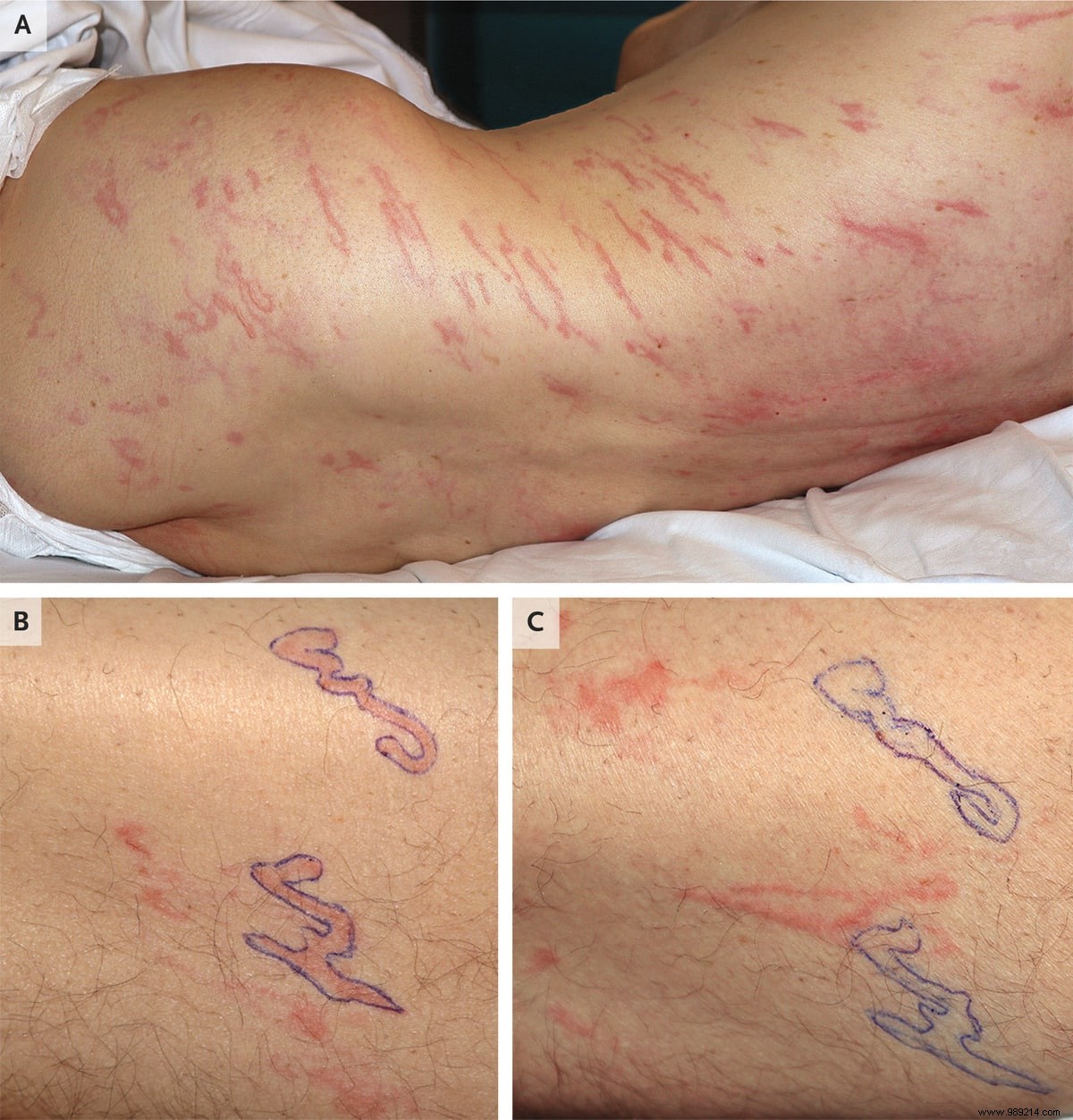Doctors in Spain have diagnosed an unusual parasitic infection in a man . An army of worm larvae squirmed beneath his skin, covering his entire body. The individual had started high-dose corticosteroid therapy just before the onset of symptoms to treat malignant compression of the spinal cord.
The case report was published a few days ago in The New England Journal of Medicine. The 64-year-old, who suffered from metastatic lung cancer, worked in sewage management. Several weeks ago, he went to the hospital to try to get rid of a tumorous growth that was beginning to compress his spinal cord. The doctors then treated him for several days with a high dose of glucocorticoids which had the side effect of suppressing certain immune responses.
Unfortunately for him, this drug approach at the same time favored the installation of parasitic worms. The offending worm in this case was Strongyloides stercoralis, more commonly known as eel . It is a nematode well known to infect humans and other animal species.
These parasitic infections begin when a person is exposed to contaminated soil or sewage, as was the case here. Armies of small larvae can then emerge, burrow directly into a person's skin unnoticed, and work their way into the intestines through various routes.
Therefore, the worms embed themselves in the lining of the small intestine and reproduce. The larvae that hatch there are then excreted in the faeces, but can also penetrate the skin in the perianal area (around the anus) resulting in self-infection.
That's what seems to have happened in this cancer patient. During the previous three years, doctors had also noted episodes of eosinophilia , unusually high levels of disease-fighting white blood cells, which may be an indicator of a parasitic infection. It is therefore possible that these worms survived for several years in the organism in the latent phase , before finally taking control under the effect of glucocorticoids.
Associated with mild diarrhea, several itchy rashes then appeared on the side of the perianal region before migrating under the skin to the trunk and limbs . As you can see below, the lesions were marked with a pen (panel B). Upon reassessment 24 hours later, they were found to have migrated away from their original location (Part C).

Doctors also observed the presence of worms in stool examination. A diagnosis of Strongyloid larva currens hyperinfection syndrome was therefore set. From then on, the man was successfully treated with the antiparasitic ivermectin, ultimately relieving his symptoms.